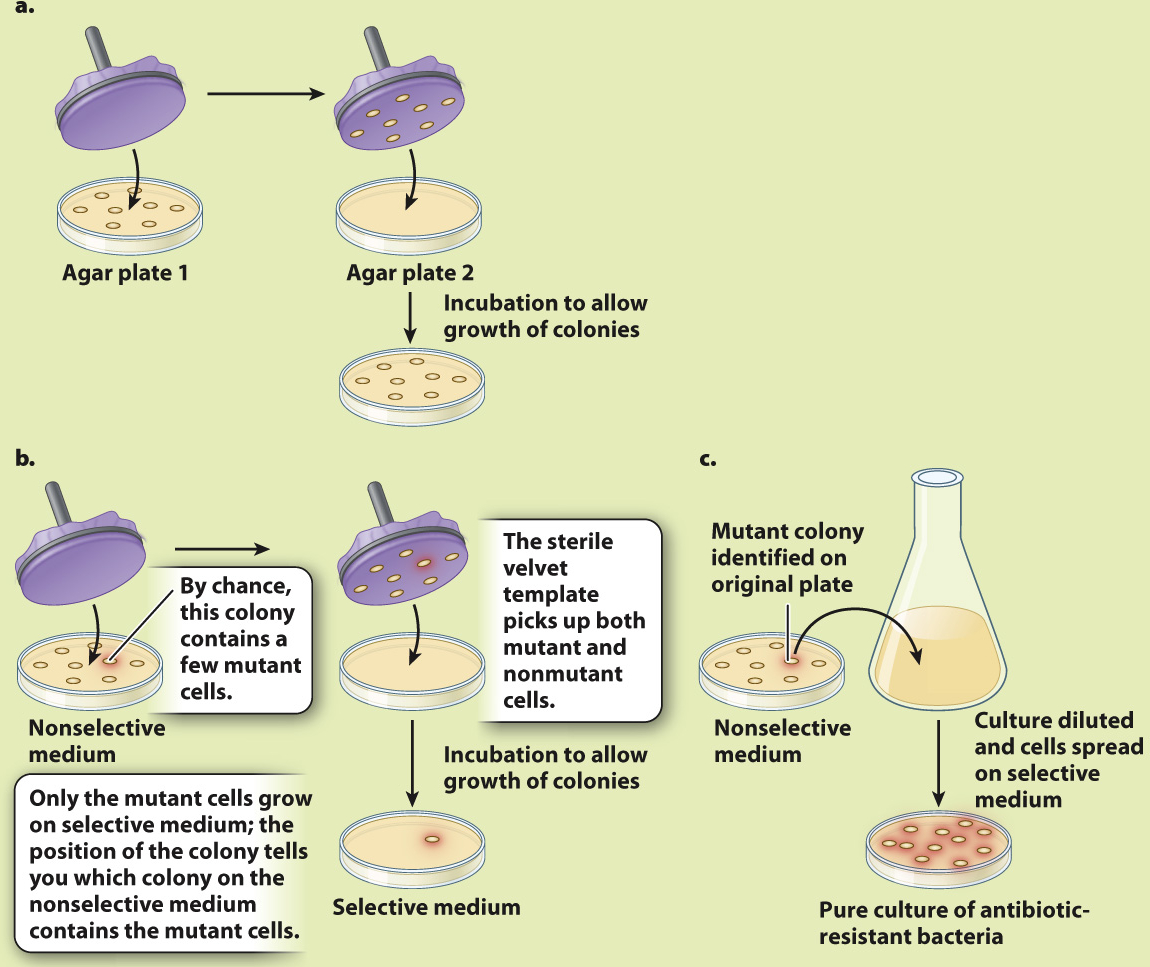HOW DO WE KNOW?
FIG. 14.5
Do mutations occur randomly, or are they directed by the environment?
BACKGROUND Researchers have long observed that beneficial mutations tend to persist in environments where they are useful—
HYPOTHESIS These observations lead to two hypotheses about how a mutation, such as one that confers antibiotic resistance on bacteria, might arise. The first suggests that mutations occur randomly in bacterial populations and over time become more common in the population in the presence of antibiotic (which destroys those bacteria without the mutation). In other words, they occur randomly with respect to the needs of an organism. The second hypothesis suggests that the environment, in this case the application of antibiotic, induces or directs antibiotic resistance.
METHOD To distinguish between these two hypotheses, Joshua and Esther Lederberg developed replica plating. In this technique, bacteria are grown on agar plates, where they form colonies (Fig. 14.5a). The cells in any one colony result from the division of a single original cell, and thus they constitute a group of cells that are genetically identical except for rare mutations that occur in the course of growth and division. Then a disk of sterilized velvet is pressed onto the plate. Cells from each colony stick to the velvet disk (in mirror image, but the relative positions of the colonies are preserved). The disk is then pressed onto the surface of a fresh plate, transferring to the new plate a few cells that originate from each colony on the first agar plate, in their initial positions.

EXPERIMENT First, the Lederbergs grew bacterial colonies on medium without antibiotic, called a nonselective medium because all cells are able to grow and form colonies on it. Then, by replica plating, they transferred some cells from each colony to a plate containing antibiotic, so only antibiotic-
CONCLUSION The Lederbergs’ replica-
FOLLOW-
SOURCE Lederberg, J., and E. M. Lederberg. 1952. “Replica Plating and Indirect Selection of Bacterial Mutants.” Journal of Bacteriology 63:399–